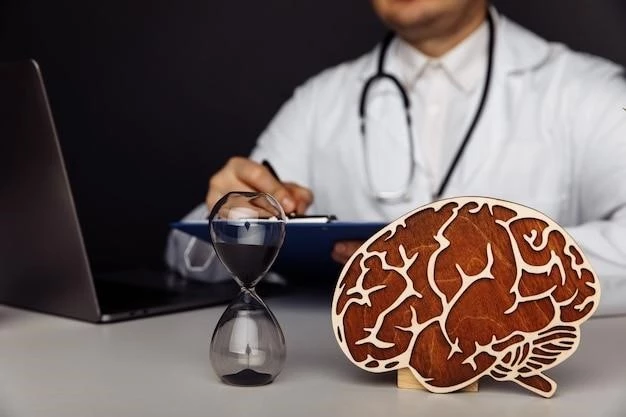Disease Overview ౼ Ectodermal Dysplasia with Mental Retardation and CNS Malformation
Introduction to Ectodermal Dysplasia
Ectodermal dysplasia is a rare genetic disorder characterized by a wide range of developmental abnormalities affecting structures derived from the ectoderm. This disorder typically presents with abnormalities in the skin, hair, nails, teeth, and sweat glands. Individuals with ectodermal dysplasia often exhibit craniofacial abnormalities, such as cleft lip or palate, missing teeth, and a reduced number of sweat glands, leading to decreased ability to sweat. These physical manifestations vary widely among affected individuals, with some showing mild symptoms while others may have more severe presentations.
The condition is also associated with cognitive and neurological impairments, including developmental delays, intellectual disabilities, and central nervous system abnormalities. Ectodermal dysplasia with mental retardation and CNS malformation refers to a specific subset of cases where individuals not only exhibit the characteristic physical features of ectodermal dysplasia but also experience cognitive dysfunction, neurodevelopmental disorders, and brain malformations.
Due to the hereditary nature of ectodermal dysplasia, individuals with a family history of the disorder are at an increased risk of inheriting the condition. The genetic mutations associated with ectodermal dysplasia can impact various genes involved in the development of ectodermal structures and the central nervous system, leading to the diverse clinical manifestations observed in affected individuals.
Understanding the complex interplay between genetic factors and clinical presentations is crucial for accurate diagnosis, appropriate management, and genetic counseling for families affected by ectodermal dysplasia with mental retardation and CNS malformation.
Link Between Ectodermal Dysplasia and Mental Retardation
Ectodermal dysplasia is often associated with mental retardation, also known as intellectual impairment or intellectual disabilities. The connection between ectodermal dysplasia and mental retardation lies in the genetic basis of the disorder; The same genetic mutations that cause abnormalities in ectodermal structures can also affect brain development, leading to cognitive dysfunction and developmental delays.
Individuals with ectodermal dysplasia may exhibit a range of cognitive impairments, including deficits in intellectual functioning, adaptive behaviors, and social skills. These difficulties can manifest as learning disabilities, speech delays, and challenges in processing information, which can impact overall quality of life and daily functioning.
The severity of mental retardation in individuals with ectodermal dysplasia can vary widely, with some individuals experiencing mild intellectual impairments while others may have more profound deficits that significantly impact their ability to learn and interact with their environment.
Research suggests that the neurodevelopmental abnormalities seen in ectodermal dysplasia, including brain malformations and neurological impairment, contribute to the cognitive dysfunction observed in affected individuals. Furthermore, the interaction between genetic factors and environmental influences may also play a role in the complex relationship between ectodermal dysplasia and mental retardation.
It is essential for healthcare providers, researchers, and families to recognize and address the link between ectodermal dysplasia and mental retardation to provide comprehensive care and support for individuals affected by this genetic disorder. Early intervention, educational support, and specialized therapies can help individuals with ectodermal dysplasia and mental retardation reach their full potential and improve their quality of life.
Central Nervous System Abnormalities in Ectodermal Dysplasia
Central nervous system (CNS) abnormalities are a significant feature observed in individuals with ectodermal dysplasia. While ectodermal dysplasia primarily affects the development of ectodermal structures like the skin, hair, teeth, and sweat glands, it can also impact the formation and function of the central nervous system, leading to a range of neurological impairments and cognitive challenges.
Brain malformations, structural abnormalities, and functional deficits are commonly seen in individuals with ectodermal dysplasia, particularly those with the subtype that includes mental retardation and CNS malformation. These CNS abnormalities can manifest as developmental delays, intellectual disabilities, and other neurodevelopmental disorders that affect an individual’s ability to learn, communicate, and interact with their environment.
Specific abnormalities in the CNS of individuals with ectodermal dysplasia may include anomalies in the structure of the brain, such as cortical malformations, reduced white matter volume, or abnormalities in specific brain regions responsible for cognitive functions. These structural changes can lead to cognitive dysfunction, speech delays, and motor impairments that impact overall functioning.
In addition to structural abnormalities, individuals with ectodermal dysplasia may also experience functional deficits in the central nervous system, such as altered neural connectivity, neurotransmitter imbalances, or impaired neuronal signaling. These functional abnormalities can contribute to the cognitive impairment and behavioral challenges often seen in individuals with ectodermal dysplasia and associated CNS malformations.
Understanding the central nervous system abnormalities in individuals with ectodermal dysplasia is essential for providing appropriate care, support, and interventions to address the complex cognitive and neurological needs of affected individuals. Multidisciplinary approaches involving neurologists, geneticists, developmental specialists, and therapists are crucial in managing the CNS manifestations of ectodermal dysplasia and optimizing outcomes for affected individuals.
Genetic Basis of Ectodermal Dysplasia and CNS Malformation
Ectodermal dysplasia with mental retardation and CNS malformation is primarily a genetic disorder caused by mutations in specific genes responsible for the development of ectodermal structures and the central nervous system. These genetic mutations disrupt normal embryonic development, leading to the characteristic physical features and neurological abnormalities observed in individuals with this condition.
The genetic basis of ectodermal dysplasia and associated CNS malformations varies depending on the specific subtype of the disorder. Mutations in genes involved in ectodermal development, such as p63, EDAR, and TP63, can lead to anomalies in skin, hair, teeth, and sweat glands, as well as cognitive impairments and central nervous system abnormalities.
Specific genetic mutations may affect the proliferation, differentiation, and apoptosis of ectodermal tissues during embryonic development, resulting in structural defects and functional deficits in the skin, teeth, and CNS. These alterations can have long-lasting impacts on an individual’s physical appearance, intellectual abilities, and neurological function.
Furthermore, the inheritance pattern of ectodermal dysplasia with mental retardation and CNS malformation is typically autosomal dominant or X-linked recessive, meaning that the genetic mutations responsible for the disorder are passed down from generation to generation in families. Genetic counseling and testing play a crucial role in identifying the specific genetic mutations in affected individuals and their family members, allowing for informed decision-making and family planning.
Advances in genetic testing technologies have facilitated the identification of novel gene mutations associated with ectodermal dysplasia and CNS malformations, enabling more accurate diagnosis and personalized treatment approaches for affected individuals. Understanding the genetic basis of this complex disorder is essential for developing targeted therapies, improving clinical management, and enhancing the quality of life for individuals with ectodermal dysplasia and associated CNS manifestations.
Clinical Manifestations of Ectodermal Dysplasia
Ectodermal dysplasia is a complex genetic disorder characterized by a wide range of clinical manifestations affecting structures derived from the ectoderm. The physical features of ectodermal dysplasia can vary significantly among affected individuals, but commonly include abnormalities in the skin, hair, teeth, nails, and sweat glands.
Individuals with ectodermal dysplasia may present with distinctive craniofacial abnormalities, such as cleft lip or palate, hypodontia (missing teeth), microdontia (small teeth), and abnormal hair patterns. These physical characteristics are often key clinical markers for diagnosing ectodermal dysplasia and can vary in severity depending on the specific genetic mutations involved.
In addition to the characteristic ectodermal abnormalities, individuals with ectodermal dysplasia may experience other systemic issues, including growth retardation, feeding difficulties, and temperature regulation problems due to decreased sweat gland function. These challenges can impact overall health and quality of life for affected individuals and may require multidisciplinary medical management.
Furthermore, the subtype of ectodermal dysplasia that includes mental retardation and CNS malformation presents additional clinical features related to cognitive dysfunction, developmental delays, and intellectual impairments. These neurodevelopmental abnormalities further contribute to the complex clinical picture of individuals with ectodermal dysplasia and can affect their educational, social, and adaptive functioning.
Given the diverse clinical manifestations associated with ectodermal dysplasia, a comprehensive evaluation by healthcare professionals, including geneticists, dermatologists, dentists, and neurologists, is essential for accurate diagnosis and personalized management of the disorder. Early intervention, supportive care, and regular monitoring are crucial in addressing the specific needs of individuals with ectodermal dysplasia and improving their overall well-being.
Neurodevelopmental Disorders Associated with Ectodermal Dysplasia

Neurodevelopmental disorders are a significant aspect of ectodermal dysplasia, particularly in cases involving mental retardation and CNS malformation. Individuals with ectodermal dysplasia may experience a range of cognitive and neurological impairments that impact their overall development, learning, and social interactions.
Cognitive dysfunction is a common feature of ectodermal dysplasia, with individuals often exhibiting developmental delays, intellectual disabilities, and learning difficulties. These neurodevelopmental challenges can affect various domains of functioning, including language skills, reasoning abilities, memory, and attention, which may require specialized educational interventions and support services.
Furthermore, neurodevelopmental disorders associated with ectodermal dysplasia can manifest as behavioral issues, sensory processing difficulties, and motor coordination problems. Children and adults with ectodermal dysplasia may have challenges in social communication, emotional regulation, and adaptive behaviors, requiring tailored therapeutic approaches to address their specific needs.
The presence of CNS malformations in individuals with ectodermal dysplasia can further complicate the neurodevelopmental profile of affected individuals. Structural abnormalities in the brain, such as cortical dysplasia, white matter changes, or abnormal neuronal migration, can contribute to the cognitive impairments and functional deficits observed in individuals with this condition.
Early identification and intervention for neurodevelopmental disorders associated with ectodermal dysplasia are essential for optimizing outcomes and promoting the overall well-being of affected individuals. Multidisciplinary care teams, including neurologists, psychologists, speech therapists, and occupational therapists, play a critical role in providing comprehensive assessment, treatment, and support to address the complex neurocognitive needs of individuals with ectodermal dysplasia and associated CNS manifestations.
